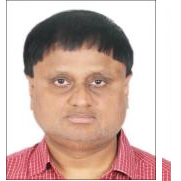Thermodynamics 2.0 | 2022 Program: Sessions and Abstracts
Mon - Wed, July 18 - July 20 , 2022 , Boone, North Carolina
Session P03: Keynote and Plenary (III)
8:30-10:30. Wednesday July 20, 2022
Chair: Roshani Silwal
Title: Thermodynamic Theory for Simple and Complex Dissipative Structures
Abstract:P03.112
Abstract
Dissipative structures (DS) are at all scales, systems, and at different levels of complexity; but have a common base in non-equilibrium thermodynamics. This conceptual study integrates simple and complex DS by addressing existence of growing or decaying DS from entropy-based analysis (considering mass energy-exchange by DS with surroundings). Two entropy-based dimensionless ratios are introduced that explain negentropy debt payment and existence of DS with growth / decay:
- Dimensionless ratio of release-flow to in-flow entropy rates of growing and decaying DS is, PS,rel/in = (> 1, from 2nd Law); hence, (PS,rel/in-1) is a measure of, “excess negentropy-debt paid” due to DS-existence. Difference between release-flow and in-flow entropy rates is the entropy rise rate of the surroundings ( > 0, from 2nd Law), which is the excess “negentropy-debt” paid to surroundings due to DS-existence. Negentropy-debt is paid by: (i) growing DS using mass-energy content of its surroundings (it is needed for DS growth and is beneficial for DS-existence); (ii) decaying DS using part of its own mass-energy content in release-flows (it is counter-productive to DS, as it hastens approach to DS perish).
- Entropy change rate of DS can vary due to, change in its disorder-level, , and accumulation of mass-energy content in DS, . Entropy-based dimensionless ratio, PDS,acc/org (= / ), determines growth (sustained / un-sustained) and decay (gradual / rapid), of DS. Growing complex DS pay lesser negentropy debt due to involvement in several other activities that are enabled by their complexity, leading to, > 0. Mediation is one of the main factors augmenting complexity, but it is needed for survival that is linked with mortality of complex DS; hence, complex DS can enter decay-phase also due to increase in their . Therefore, disorder of complex DS increases and their growth can be un-sustained, leading to entry in decay-phase, in spite of availability of adequate mass-energy in-flows. Reduction in complexity or proper management of complexity can enable increase in both PS,rel/in and PDS,acc/org (in the direction of ideal growth, = 0). Prolonged existence of DS is either in the sustained growth or gradual decay phase, as other two phases (un-sustained growth, rapid decay) are relatively much shorter.
As part of future research scope, above claims can be taken forward to study entropy production ( ) by DS collectively, for comparing global with individual when operating in group.
Keywords: complexity, dissipative structure, entropy-energy ratio, negentropy debt
